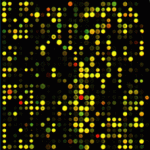Genomics
|
23 november 2014 15:02:41 |
| Comparative genomic analysis of nine Sphingobium strains: insights into their evolution and hexachlorocyclohexane (HCH) degradation pathways (BMC Genomics) |
|
Tweet Background:
Sphingobium spp. are efficient degraders of a wide range of chlorinated and aromatic hydrocarbons. In particular, strains which harbour the lin pathway genes mediating the degradation of hexachlorocyclohexane (HCH) isomers are of interest due to the widespread persistence of this contaminant. Here, we examined the evolution and diversification of the lin pathway under the selective pressure of HCH, by comparing the draft genomes of six newly-sequenced Sphingobium spp. (strains LL03, DS20, IP26, HDIPO4, P25 and RL3) isolated from HCH dumpsites, with three existing genomes (S. indicum B90A, S. japonicum UT26S and Sphingobium sp. SYK6).
Results:
Efficient HCH degraders phylogenetically clustered in a closely related group comprising of UT26S, B90A, HDIPO4 and IP26, where HDIPO4 and IP26 were classified as subspecies with ANI value >98%. Less than 10% of the total gene content was shared among all nine strains, but among the eight HCH-associated strains, that is all except SYK6, the shared gene content jumped to nearly 25%. Genes associated with nitrogen stress response and two-component systems were found to be enriched. The strains also housed many xenobiotic degradation pathways other than HCH, despite the absence of these xenobiotics from isolation sources. Additionally, these strains, although non-motile, but posses flagellar assembly genes. While strains HDIPO4 and IP26 contained the complete set of lin genes, DS20 was entirely devoid of lin genes (except linKLMN) whereas, LL03, P25 and RL3 were identified as lin deficient strains, as they housed incomplete lin pathways. Further, in HDIPO4, linA was found as a hybrid of two natural variants i.e., linA1 and linA2 known for their different enantioselectivity.
Conclusion:
The bacteria isolated from HCH dumpsites provide a natural testing ground to study variations in the lin system and their effects on degradation efficacy. Further, the diversity in the lin gene sequences and copy number, their arrangement with respect to IS6100 and evidence for potential plasmid content elucidate possible evolutionary acquisition mechanisms for this pathway. This study further opens the horizon for selection of bacterial strains for inclusion in an HCH bioremediation consortium and suggests that HDIPO4, IP26 and B90A would be appropriate candidates for inclusion. |
| 137 viewsCategory: Genomics |
 Functional chromatin features are associated with structural mutations in cancer (BMC Genomics) Functional chromatin features are associated with structural mutations in cancer (BMC Genomics)Key regulators in prostate cancer identified by co-expression module analysis (BMC Genomics) 
|
| blog comments powered by Disqus |
MyJournals.org
The latest issues of all your favorite science journals on one page
The latest issues of all your favorite science journals on one page



